Currently, there are four operating spacecraft in the outer part of the solar system. Three of them are leaving it, heading for interstellar space. These are a pair of Voyager probes and the New Horizons spacecraft.
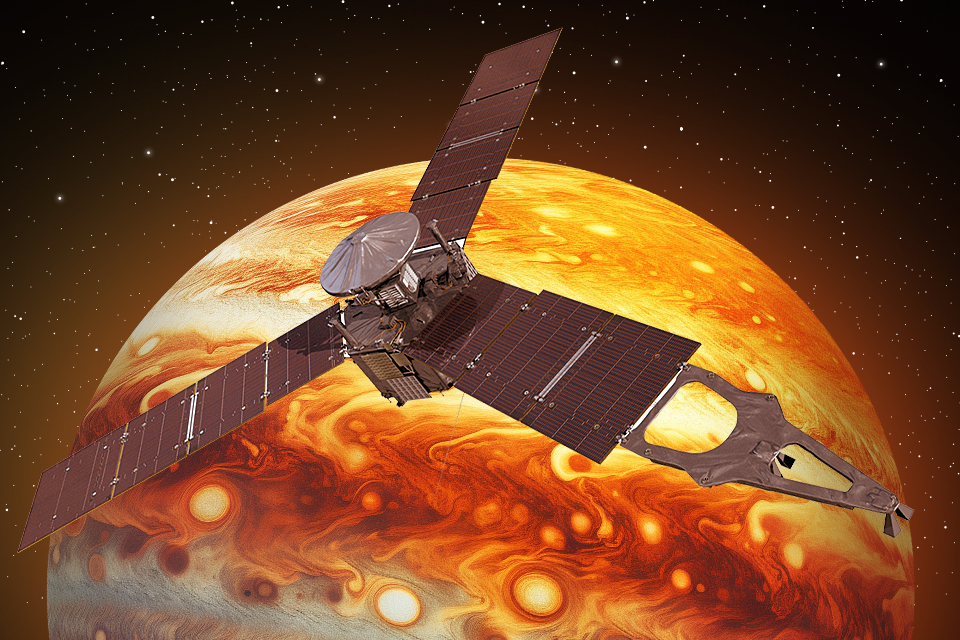
However, there is also a fourth mission that is currently in orbit around Jupiter and is studying it. It is called Juno. In this article, we will tell you about its history and main achievements.
Project’s history
NASA started developing Juno back in the noughties. The main goals of the mission were to study the gravitational and magnetic fields of Jupiter, its atmosphere, and to test the hypothesis that the gas giant has a solid core.
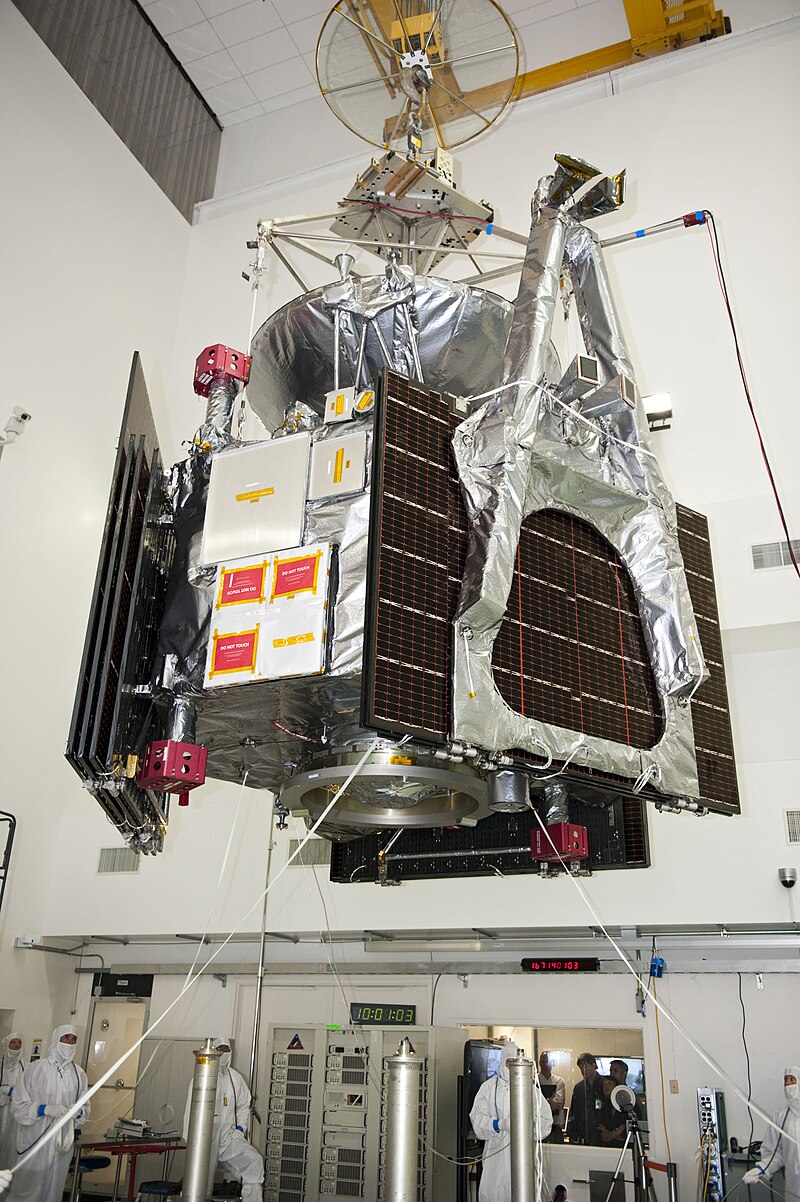
Juno was launched in 2011 and reached its goal five years later. However, not everything went smoothly. Initially, the spacecraft was supposed to enter a 14-day orbit around Jupiter. But due to the failure of its main engine, Juno was stuck in an intermediate 53-day orbit.
However, NASA engineers were able to make adjustments to the mission plan, so the misfire did not prevent Juno from completing its tasks. Moreover, engineers later came up with a way to use the “unplanned” orbit of the spacecraft to direct it to the largest moons of Jupiter. Interestingly, this would not have been possible if Juno had initially entered the desired orbit.
Technical design of the spacecraft
Juno was the first ever solar-powered spacecraft to reach Jupiter. Prior to it, all the earthly envoys who visited the gas giant had radioisotope generators. The total area of Juno‘s solar panels exceeds 50 m². Such an impressive size is explained by the fact that near Jupiter, the device receives 27 times less light from the Sun than it would be near the Earth.
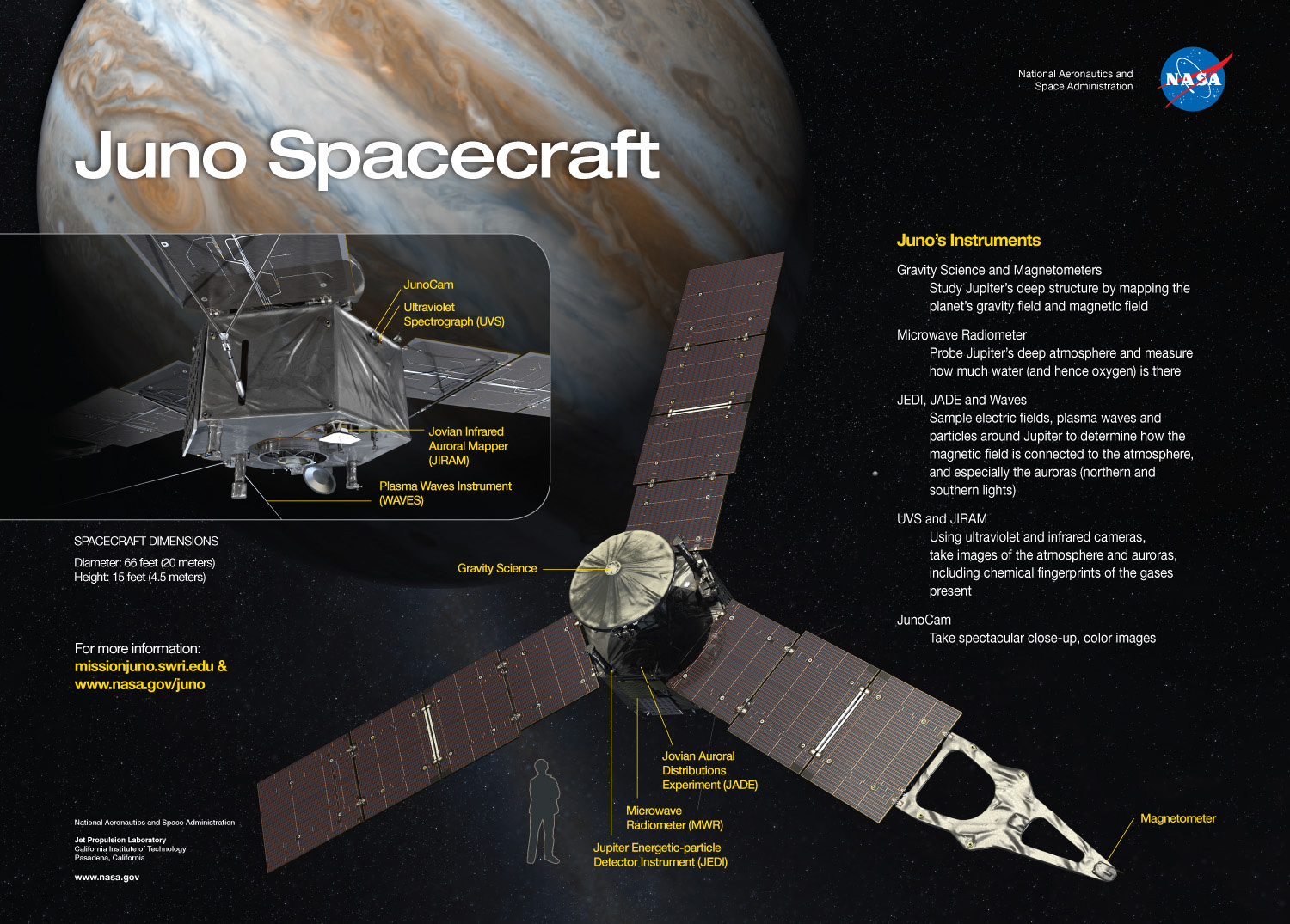
Since Jupiter has the most powerful radiation belts among all the planets of the Solar System, experts have equipped Juno with a special “shelter”. It is a titanium cube with a wall thickness of 1 cm. It houses the most sensitive electronics of the spacecraft.
“People’s camera”
Juno‘s scientific guts consist of nine scientific instruments, including an ultraviolet spectrograph, a magnetometer, a charged particle detector, and more. But perhaps the most famous instrument of the spacecraft, ironically, was not supposed to be on it from the very beginning. We are talking about the JunoCam camera, sometimes called the “people’s camera”.
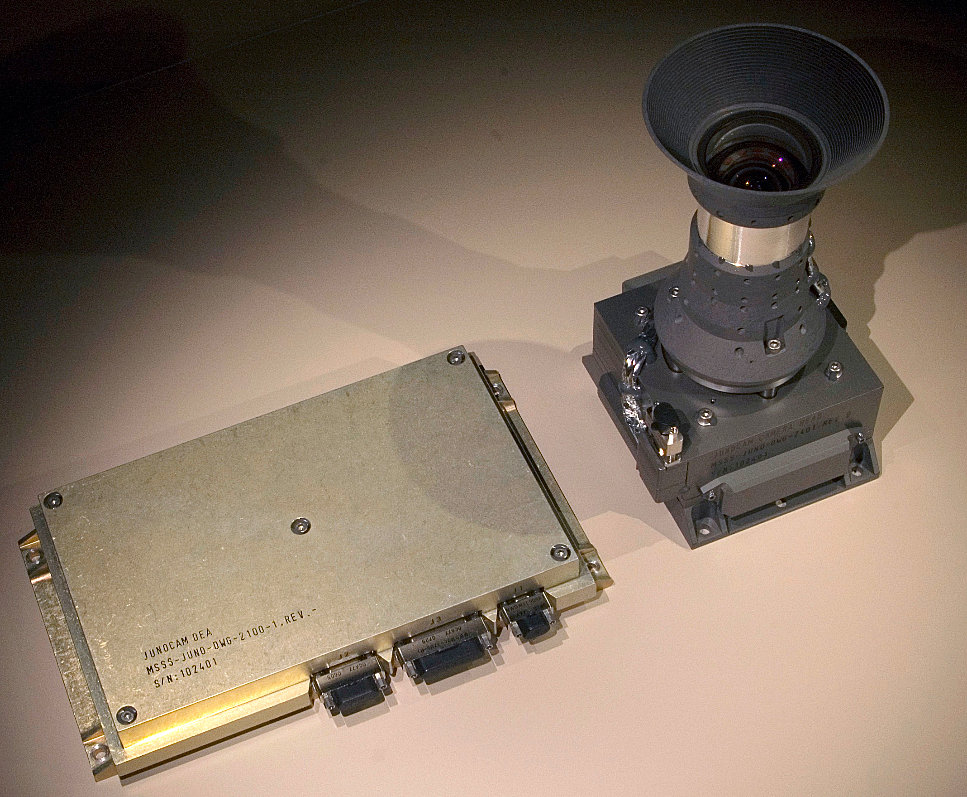
The fact is that initially, NASA simply wasn’t going to put any optical instrument on Juno, arguing that it was not needed to fulfill the mission’s scientific program. However, both the scientific community and ordinary astronomy fans strongly criticized this decision. In the end, NASA installed the camera anyway. Moreover, the aerospace administration has created a special website for it, where amateur astronomers can choose and vote for the most interesting parts of the atmosphere that they think should be captured by JunoCam. That’s why it got its nickname.
During its mission, JunoCam has delighted us not only with spectacular images of Jupiter and its poles, but also with the most detailed images of its moons, Ganymede, Europa, and Io.
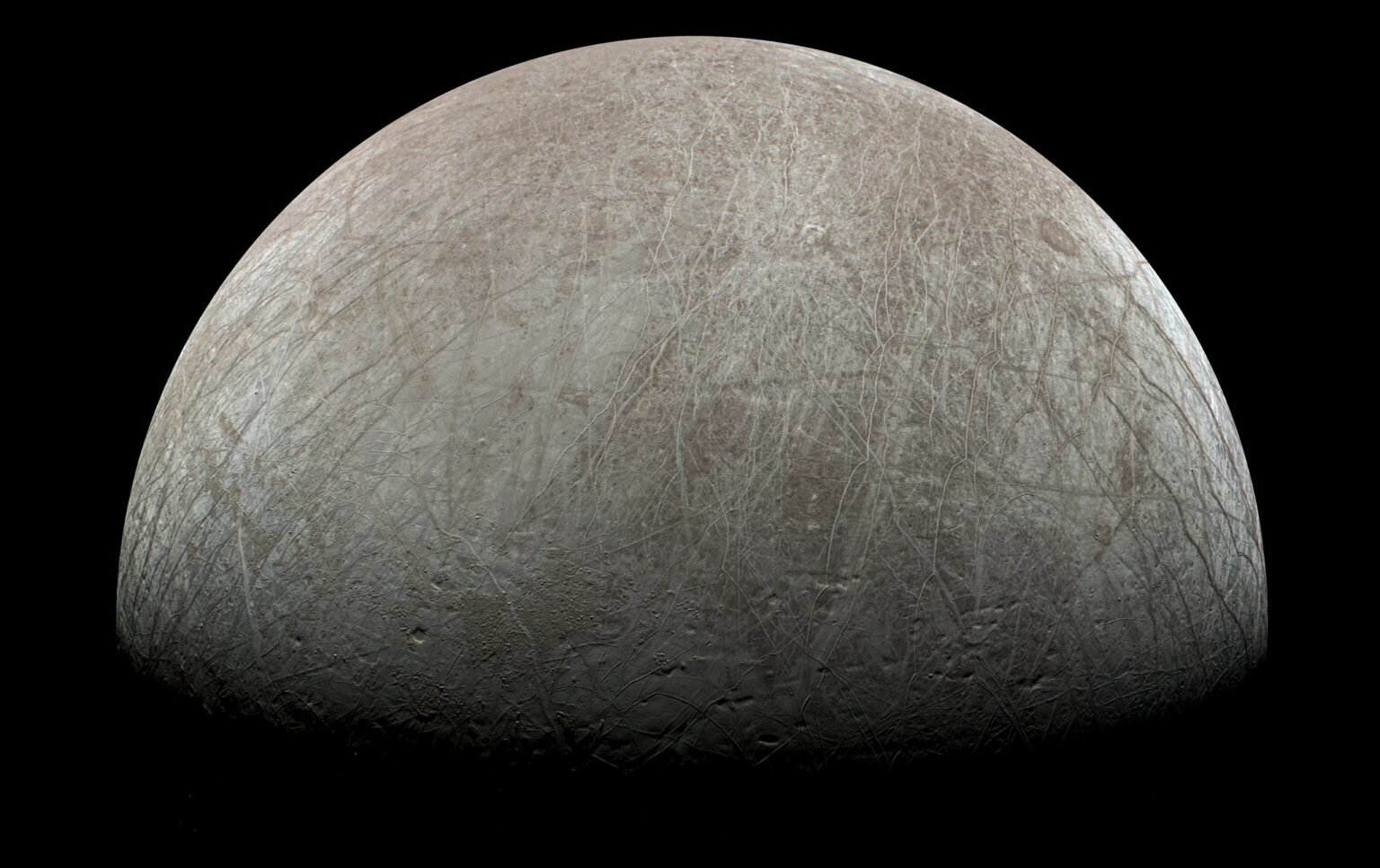
In addition to scientific instruments, Juno also carries a small Easter egg: a plaque honoring Galileo Galilei, as well as a set of Lego figures. One depicts Galileo, the other the god Jupiter, and the third the goddess Juno.
Juno’s main achievements
Juno turned out to be a very productive mission. It made many discoveries that cast doubt on the current theories about the formation of Jupiter. For example, it found that the gas giant’s magnetosphere is uneven and chaotic. The planet’s storms are located much higher than expected, and the famous red and white streaks, which can be observed even with an amateur telescope, extend hundreds of kilometers deep into the Jovian atmosphere. At the same time, the interior of the gas giant is unevenly mixed.
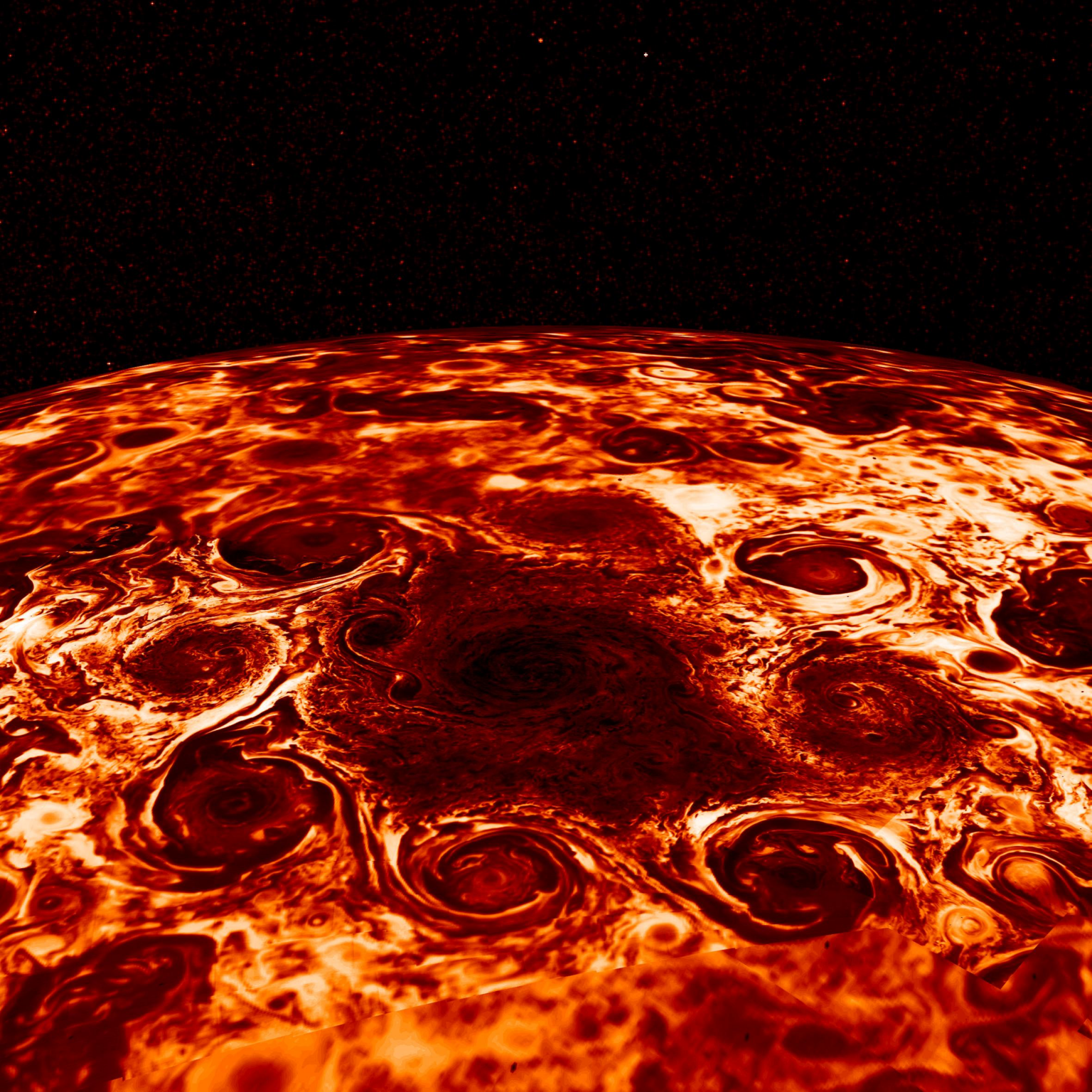
Juno’s data led to a new theory that Jupiter does not have a solid core, as previously thought, but a “blurred” core consisting of pieces of rock and metallic hydrogen. This may be the result of a collision that occurred in the early stages of the formation of the Solar System.
Juno also collected information about Jovian lightings, showed the north pole of the gas giant for the first time, and solved the mystery of the cosmic dust responsible for the phenomenon known as zodiacal light. Previously, it was believed that its main source was comets and asteroids. But Juno found out that this is not the case, and that the dust actually comes from Mars.
The future of the mission
Initially, the Juno mission was supposed to end in 2018. However, it was extended twice: first until 2021 and then until 2025.
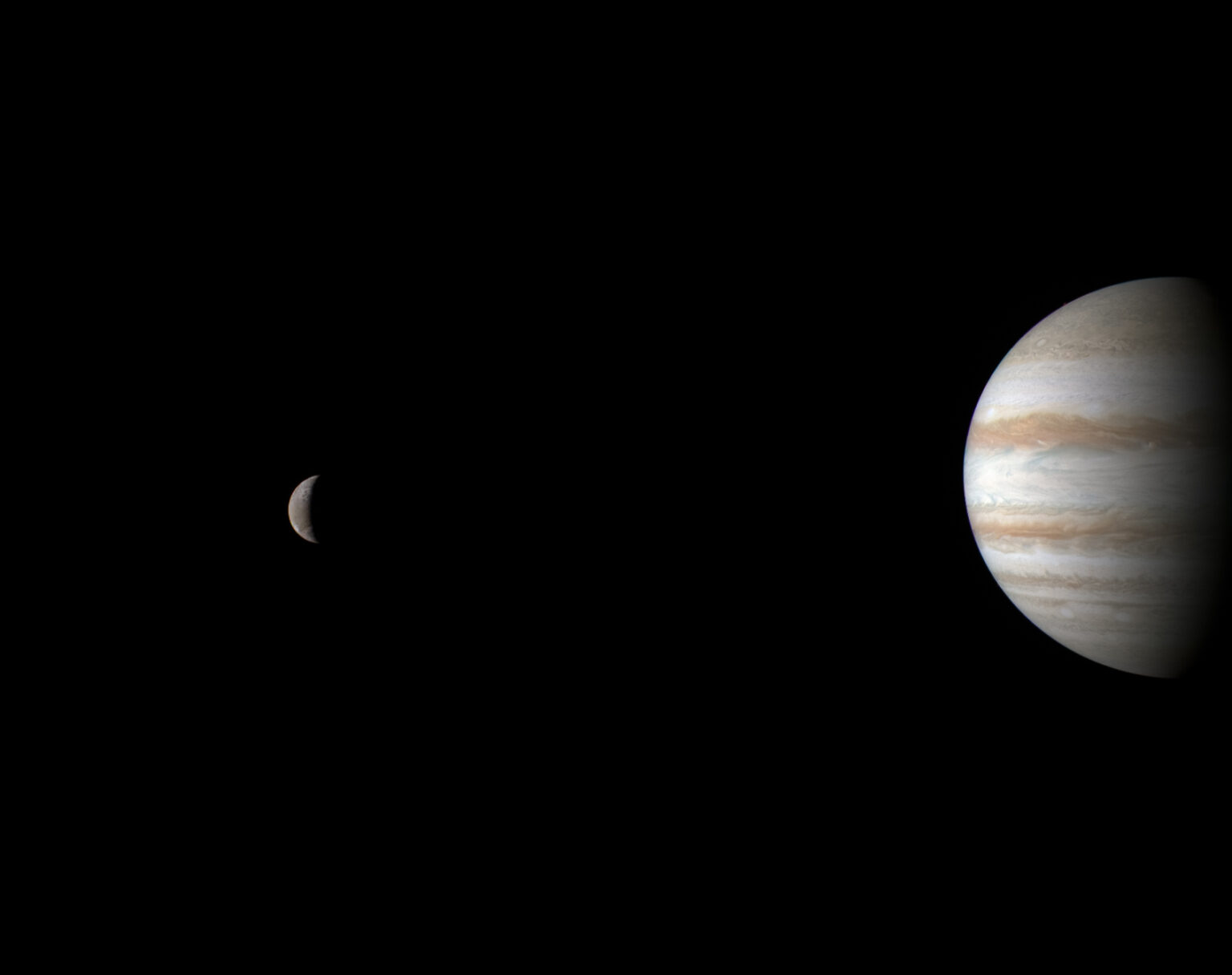
It is currently unknown whether NASA is going to continue the mission again. Juno is successfully coping with its tasks, although the impact of high levels of radiation is definitely making itself felt. During its stay in the vicinity of Jupiter, the spacecraft encountered a number of failures, some of which were related to JunoCam.
In any case, regardless of whether NASA wants to continue the mission or not, its final fate is already known. After the decision to terminate the mission is made, Juno will be sent into the Jovian atmosphere and burn up in it. This is necessary to eliminate any possibility that in the future an uncontrolled vehicle will crash into one of Jupiter’s icy moons and infect it with Earth microorganisms.

